
Lice - parasites quite vulnerable and sedentary. They cannot travel long distances, they have no wings. Yes, and they multiply not particularly quickly - each female in her life can give life to only a few dozen descendants. But, nevertheless, according to the effectiveness of the spread and transmission between people, lice are ready to plug many other parasites into a belt.
The way lice are transmitted has been actively studied during the mass epidemics of the diseases they carried - typhoid and helminth infections. And it turned out that head lice they are transmitted easily, from a biological point of view, efficiently, and without expressed frills, simply crawling from one person to another, or being forcibly transferred.
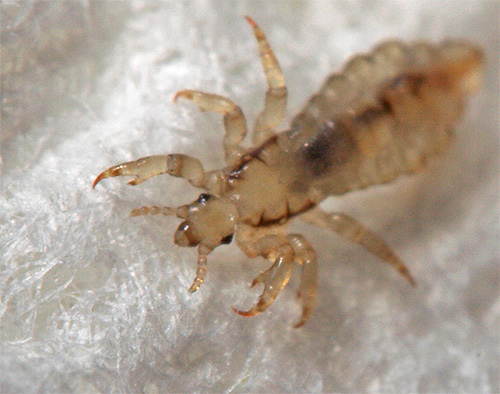
Certain details of how lice spread should definitely be known in order to protect themselves and their children from these parasites.
Ways to spread head lice
The spread of lice occurs always in places where people live, and especially often when their settlement is compacted. Head and body lice especially quickly spread in communal apartments, barracks, refugee camps. During the war years, parasites pounded soldiers in barracks and trenches - in places of dense crowds of people lice feel completely at ease.

It is interesting
Epidemic typhus, carried by lice, is even called “trench fever” because it mowed down soldiers during the Crimean campaign, the Napoleonic wars, and during World War I in the trenches on the battlefield. Under unsanitary conditions, lice spread among the soldiers very quickly and infect almost everyone.
Lice are transmitted from person to person in several ways:
- crawling from the head of one person to another. Most often this occurs in those who share a single bed, as well as between children when playing together. This is the primary method of transmitting lice.
- Head lice can be transferred through hygiene items and household items - combs, towels, scrunchy, hoops, and from there they fall on the head of another person when sharing these things.This method is relatively rare, but may occur.
- Lice are also spread through common clothes. For head lice, hats, scarves and jackets with a hood are most relevant, and a clothes louse can be transmitted through any clothes that have nits, nymphs and adult insects.
- In very rare cases, parasites fall on bedding and pillows, and from there they climb onto the head of another person who lies on the same bed.

It is important to understand that carriers of lice are all people with any number of these insects on their heads. However, the more a particular person is infected with lice, the greater the likelihood that they will fall from his head on furniture or household items, and therefore the greater the risk of infection from him.
Important!
Lice can be transmitted by water in public bathing areas. It is known that in India, in poor areas, lice are transferred directly to the rivers, in the shallows of which both children, and adults, and old people bathe. Most commonly, pubic lice are transmitted in this way, however, head lice can spread in the same way: scientists are known for their high resistance to hypoxia and their ability to survive in water for up to two days.
Nits (lice eggs) due to the inability to move are transmitted only by the forces of the person himself. This may be the use of common hairbrushes, on which hair remains with attached eggs, towels, common clothes or a bed, on which hair remains infected.

In general, nits are rarely transmitted and are not the main infectious agents. In other words, in quantities that can cause an epidemic and infection of a large number of people, nits are not transmitted.
Do lice bounce?
Lice do not jump: their paws are well adapted only to clasp a hair and firmly hold it, but there are no mechanisms for jumping lice. In addition, lice have a rather massive body, little adapted for active movements.
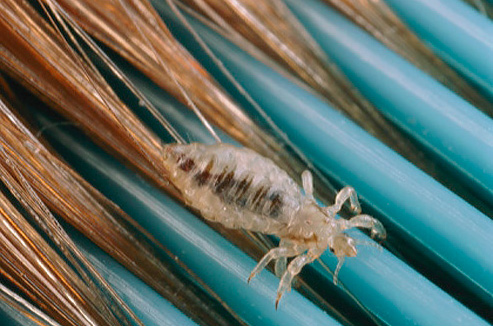
Therefore, lice do not jump, but only crawl. Due to the fact that lice do not know how to jump, they are not transmitted between people at a distance, and you can communicate with an infected person quite easily. Of the typical blood-sucking insect parasites in the apartment, which can jump, you can find only fleas.
Feedback
“A child came from kindergarten and said that he wouldn’t go there anymore, because the girl from the group found lice and said that the lice jump from head to head, and every child can get infected.We understand that lice spread somewhat differently, but if one child has lice in the kindergarten, then everyone else will, even though they do not know how to jump. ”
David, Ishmael
However, lice crawl quite quickly and actively, and even with short-term close contact (for example, with a kiss) are quite able to manage to get over to the head of a healthy person.
Dispelling myths, or how lice are not transmitted
There are a lot of lice myths, and some of them are so strong universal stereotypes that their refutation causes real bewilderment.

Myth 1. Lice jump.
This was said before. Lice do not know how to jump and do not jump from head to head.
Myth 2. Lice are transmitted in dirty apartments at a distance.
Lice cannot be transmitted at a distance. And in itself, the sanitary condition of the premises can only indirectly affect their transfer (after all, in such apartments the elementary rules of personal hygiene are often not observed).
Myth 3. Head lice are transmitted only from children.
Absolutely unsubstantiated assertion - head lice equally actively infect and pass on both children and adults.
Myth 4. Lice are transmitted only during sexual intercourse.
With sexual intercourse, pubic lice are transmitted. The head parasites can be transmitted either through sexual contact, or simply through close physical contact - hugs, wrestling, and mother-child care.

Myth 5. Lice are transmitted from pets
This misconception is so common that lice on domestic animals should be said separately.
Do lice pass from animals to humans?
Neither the so-called canine, nor cat lice man is not transmitted. This is due to the characteristics of lice and binder in general - each species of these parasites is strictly specific to its owner and cannot live and inhabit other species of animals.
On cats the cat eater lives, on dogs - dog, and in everyday life they are called lice only for the similarity of appearance with human lice. But getting on the body of an animal of another species, including humans, these insects quickly die.
Lice in dogs are not transmitted to humans, even through close contact, when, for example, an animal sleeps with a person on a bed. By the way, lice in cats and dogs are not transmitted not only to humans, but also to these species from one to another - that is, the feline louse cannot live on dogs, and the dog lynx - on cats.
Some features of lice transmission
There are some details in the transmission of lice, which may seem unusual and even funny.
For example, statistically confirmed information that head lice more actively infect nerve people prone to feelings and anxiety. It is believed that in nervous people the blood pulsates more actively, and they sweat more often, which is why their body odor turns out to be more attractive to parasites.
In addition, during sexual contact, it is possible to transfer two types of lice at once - the head and pubic. Such a double infestation is one of the most unpleasant consequences of promiscuous sex life.

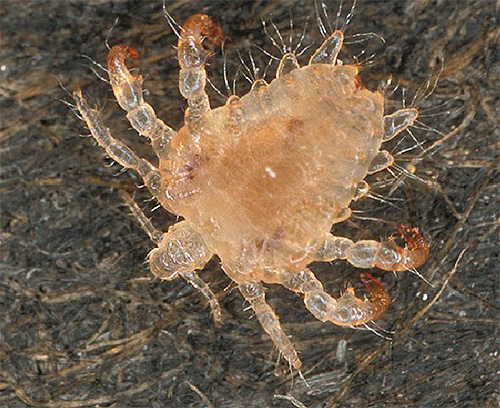
In any case, for reliable protection against lice, you should remember all the ways of their transmission and avoid:
- close contact with unknown people or those who have obvious signs of infection with lice
- use of foreign hygiene items
- swimming in places with a lot of marginal social elements.
And if suddenly in kindergarten a case of lice infecting one of the children was identified, then it’s better to keep your child at home for a week or two. This will save parents from serious trouble.
Useful video: how to properly rid the child of lice

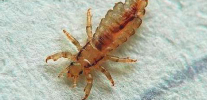
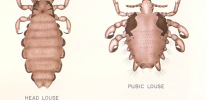

Antiv Scallop suited me very well. No contraindications (and I am allergic to some chemicals, I don’t even know which ones). A comb does not carry any chemistry in itself. What is better for me you can imagine.
I am against chemistry in the treatment of pediculosis. Folk remedies also will not help in this problem, since they are ineffective and, by the way, are expensive. It is necessary to use normal means. For me, this was the anti-drug.
I am personally against the treatment of lice with chemistry, but I treat my head lice with a tea tree and they all die! Try, helps too! 🙂
It's cool, and the comb is also non-toxic at all.
I agree
The treatment of pediculosis is, of course, a very specific process! In my opinion, it is still better to be treated by professionals. When I discovered baby louse, without hesitation, I began to scour the Internet in search of suitable specialists. As a result, found. Experts come to the house. And depending on the degree of neglect of pediculosis, in a few hours they get rid of this misfortune, even a child, even an adult. They comb out a special comb, which, by the way, is then left at home. For prevention, they sometimes need to comb their hair. I would so quickly and effectively in life would not be able to save a child from parasites!
They can be etched with tea tree or lavender.
Not
Lice can be etched with tea tree, it helps a lot, super.
No traditional medicine can kill them. Only chemical products and combing. Nothing else will help, except for burning hair.
Little brought lice from the camp. Long tormented. Neither shampoos nor special products helped. Helped triple cologne. They poured their heads, wrapped them in a towel and left them for a couple of hours. They just suffocated 🙂
I go to an additional school, 13 years old. The girl shows signs of lice. We are pretty good friends, and I support her this way, because she is hurt at school because of this. But in fact, I am rather serious about cleanliness, and to be honest, after embracing goodbye, it becomes unpleasant. This is probably the closest contact in this situation. Any chance of catching insects?
Of course have.
I am helped by kerosene with the addition of sunflower oil and shampoo (3: 1: 1). No domestic drugs can kill nits, only kerosene, unfortunately ...